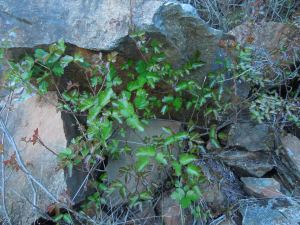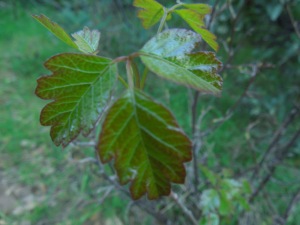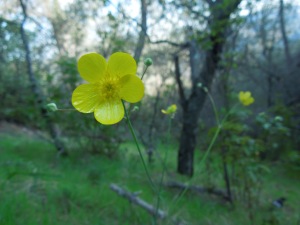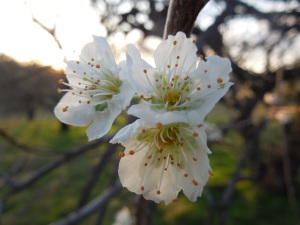Salvia apiana, commonly known as white sage, has a rich history of use in medicinal, spiritual, and culinary applications.
The use of white sage by Indian tribes, most noted include the Chumash, Shoshone, and Cahuilla, can be traced back 4,000 or more years, and its uses have been adopted by many other cultures. Despite its rich history and many benefits, the Food and Drug Administration has classified it as a potentially dangerous substance. This plant is a rhizotomous herb endemic to California and the northern Baja Peninsula. Known for its fragrance, it is described as sage, pine needles, burning rubber, and skunk, as expected by a Lamiaceae. It is an Asterid in the Order: Lamiales, Family: Lamiaceae, Genus: Salvia L. (sage) and the species is Salvia apiana-Jeps. (white sage).
This perennial, evergreen, shrub blooms in August through September (USDA NRCS websites 3/2013). Spikes of flowers rise as high as five feet, with 100 or more one inch flowers in a raceme like formation, sometimes called “sage wands”. (Growing White Sage 3/2/2013) Stems are erect with panicle inflorescences whose blooms are bilabiate in shape. Flower buds are tightly arranged at the top of the stems. (Coman, Heather 3/2/2013) Petals are arranged with a two lobed upper lip and three lobed lower lip that is long and ruffled, blocking the corolla tube that creates an obstacle for entry. Bumble bees, hawk moths, wasps, and hummingbirds still manage to pollinate sage. Flowers have bilaterally zygomorphic symmetry, containing five fused petals, five fused sepals, four stamens (two long and two short), with one pistil, two carpels and a superior ovary. Blooms range from light lavender to white, and may have lightly colored spots of lavender. Developed fruits are small, light brown, cylindrical achenes.
The leaves grow on four sided stems, and are up to four and one half inches long, pubescent, widely lanceolate, with margins often entire, but may have irregularly toothed or lobed leaves with pinnate veination. Rugose when they open, the leaves become glaborous with maturity. With a basal arrangement of two foot mounds, leaves are a bit thicker than many plants’ leaves. They contain oil and resins that create the silvery sheen with a unique greyish green coloration.
Salvia apiana grows mostly in southern California, but a few sightings have been reported in Northern California and as far south as northern Baja Peninsula. The soil best suited to white sage is either sandy or loamy, needs to be dry to just moist. It prefers slopes. The pH should range from 6-8 and rainfall averages of 6-20 inches per year. White sage requires full sun and good air circulation. Natural ranges include coastal sage scrub, edges of desert, chaparral, short and tall grass prairies, and yellow pine forests under 4900 feet, although the plant is adapting to grow in riparian areas along perennial and intermittent streams.
Sage hybridizes easily, broadening its gene pool. The encroachment of civilization and over-harvest by digging up its rhizomes are currently the greatest threats to the species growing in its natural habitats. It is being replaced “by weeds”. (Laughably, it grows among poison oak, so perhaps the thieves get more than they bargain for!) Numbers of this plant are not specified. The concerns are more about its natural habitat being diminished and how that is effecting the overall ecology. Deer, mountain sheep, rabbits, antelope and elk use it for grazing. It is an excellent pollen source for bumble bees and wasps, and nectar source for hummingbirds. The species is itself abundant which I expect to increase due to marketing through local nurseries and internet sources.
Ethnobotany studies and defines the relationships between
ancient men and plants.
Plants are a historical part of our environments and our need to survive or find comfort for maladies and pains. Current study includes related pharmacology, photo chemistry, ecology, culinary uses, and potential dangers.
Traditionally, white sage has been used before hunting by rubbing it all over the hunters’ bodies to disguise human scent, but also as a shampoo. As a food source, its seeds were toasted and ground, added with other grains for cereal, or made into flour, and some cultures ate the leaves too. Ripe stems were peeled and eaten uncooked. Prayers made while burning white sage are believed to cleanse, comfort, and soothe ones’ emotional state.( Root Simple 3/26/2013) The Chumash tribes suck on a leaf or drink it in water daily to “remain calm, peaceful and healthy.”( White Sage 3/25/2013) Lists of historical uses are exhaustive for everything from delaying hair to getting irritants out of your eyes. Seeds placed in the eyes become gelatinous overnight making it easy to pull any debris when removed in the morning! The word Salvia comes from the Latin word “to heal”. Its uses extend to comfort for colds, stomach problems, toothaches, asthma, flu, women’s’ monthly cycles, reducing inflammation, to drive away mosquitoes away, relieve itching, prevent nosebleeds, ease symptoms of rheumatism, as an astringent for eczema, and cure sores. It is known to contain “a compound called miltirone which may act like Valium to relieve anxiety”. (Adams, James 3/26/2013) The fine print is to try these things at your own risk, consulting your doctor first.
There are scientifically confirmed promising benefits of white sage.
It may increase the production of T-cells for AIDS patients. It killed all four of the bacteria it was tested on, including staph and pneumonia at the University of Arizona. (Title: Potential anti-infective agents from Eriodictyon angustifolium Nutt. And Salvia apiana Jeps) Salvia apiana is currently being studied for its ability to aid the body in managing insulin levels. (The Growers Exchange 3-2-2013) It is FDA approved for eczema treatment. The Chinese military uses it for exclusively for malaria to lower fevers and kill parasites in the blood stream, with better results than any medication. It has estrogen like properties that assist women with post childbirth healing (although it can reduce milk production) and with women’s’ monthly cycles.
With its current, almost contagious spiritual applications being popularized worldwide, its durability, and current scientific research confirming its miraculous proven health benefits, white sage will endure.
White Sage Beverage
I put one sage leaf and a chunk of peeled fresh ginger into my pure water. Too large a sage leaf for your volume of water can be overpowering, so start small. It will flavor plastic containers. I use my metal water bottle. Adding a little lavender is good also.
Make an Effective Natural Headache Salve
• 1 cup organic light oil, such as safflower, sesame or sunflower oil
• 1 ounce fresh or dried white sage
• 1 ounce fresh or dried eucalyptus
• 1 ounce fresh or dried lavender
• 1/2 ounce grated pure beeswax
• 3 vitamin E capsules, for a preservative
• Cheesecloth
1. Put herbs in a glass casserole dish, cover them with oil and stir well. Bake in an oven at 200 degrees for 3 hours to make an herbal infused oil. Take the mixture out of the oven, let sit for 10 minutes to slightly cool, and strain the herbs from the oil with the cheesecloth, squeezing the oil from the herbs.
2. Put this herbal infused oil into a large stainless steel (not aluminum or copper) pot on the stove on low heat. Do NOT boil or burn the oil. Poke the vitamin E capsules with a fork or toothpick and squeeze the liquid vitamin into the oil. (I used vitamin E drops instead of capsules). Add the beeswax and stir on low heat until softened and mix together well. Remove the pot from heat and let it sit for 5 minutes. It will still look thin and lightly colored.
3. While still warm, pour the salve mixture into cosmetic jars, letting it cool and thicken before lidding the jars. It will thicken to a nice creamy texture for a salve, not hard. Store in a dark cool place.
Rub a small smudge of white sage headache salve on temples or forehead between eyes to relieve headache pain instead of taking aspirin. For congestion it can be rubbed on the chest and across sinuses. The oils in eucalyptus and sage break up congestion and phlegm.
References :











































